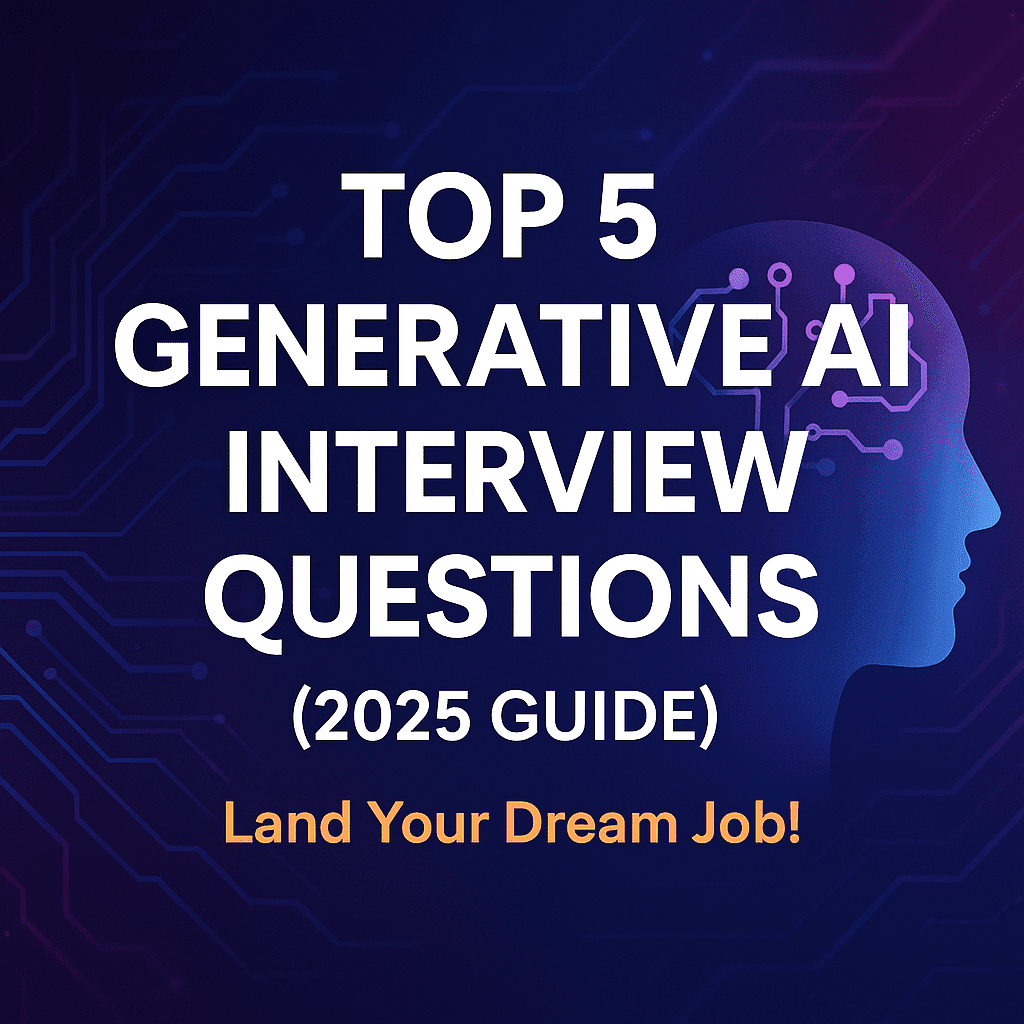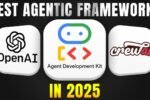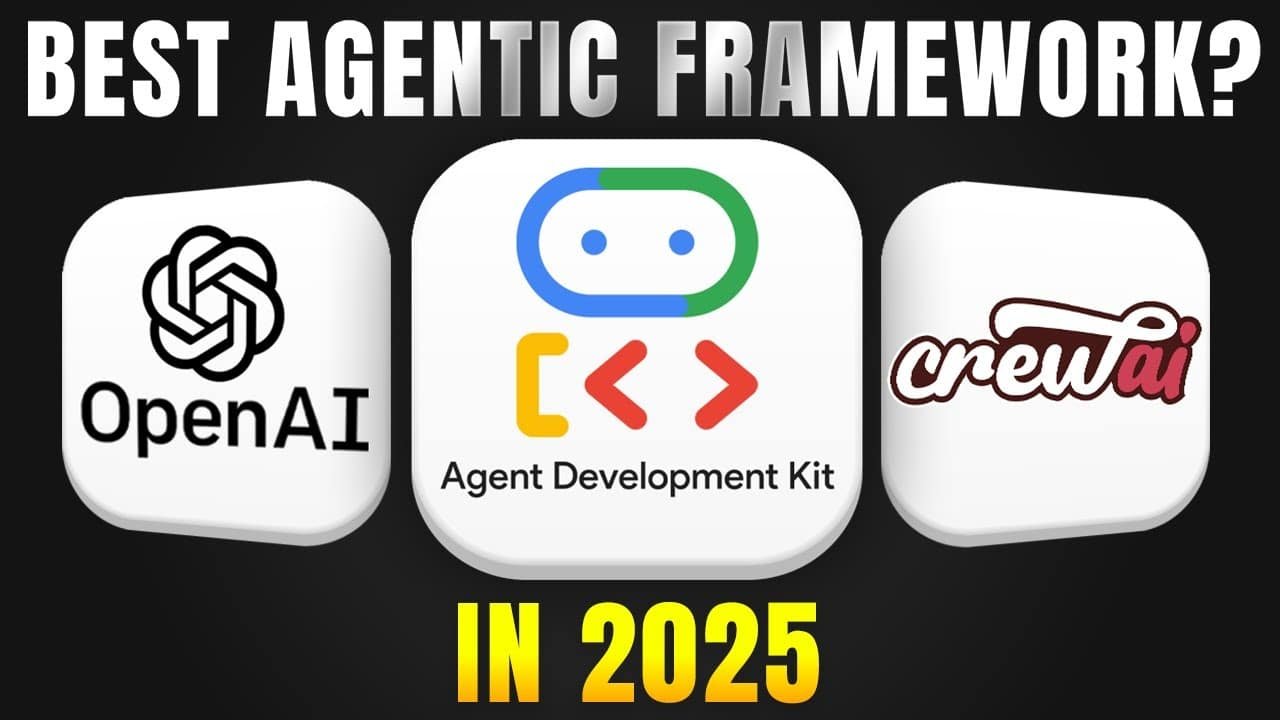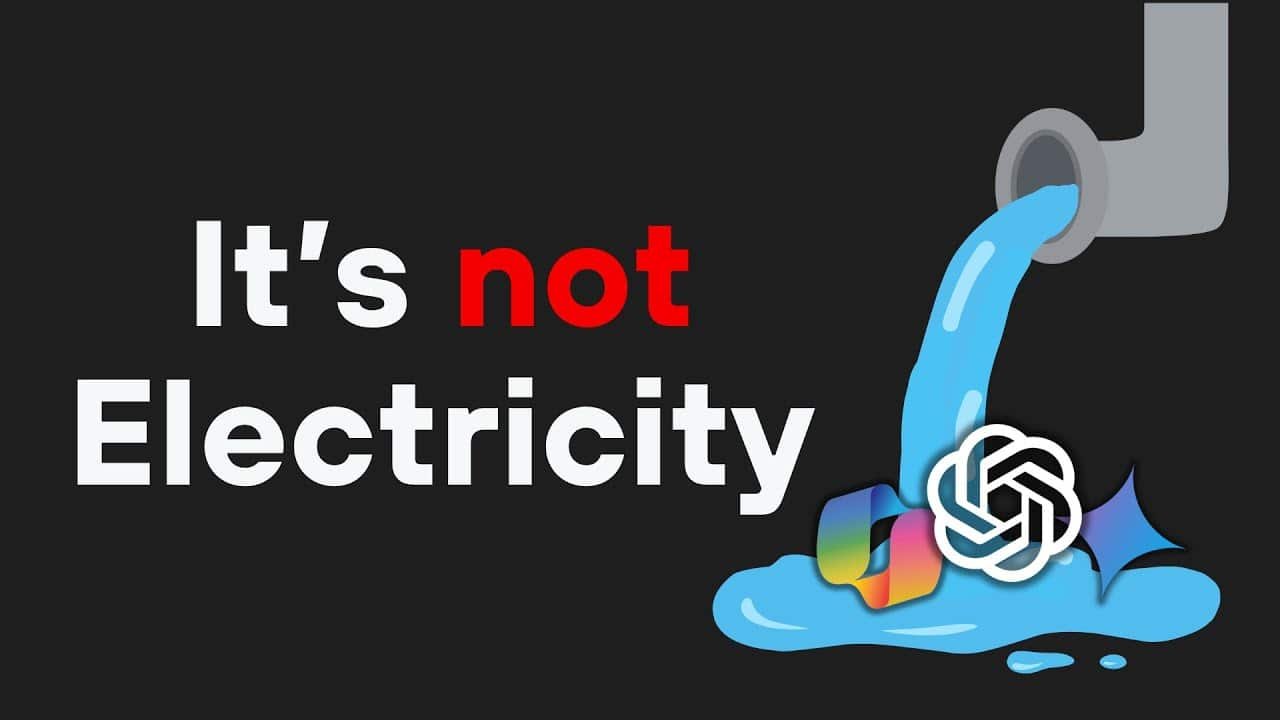Introduction
Generative AI is no longer a hard concept — it’s a present-day force transforming how businesses operate, innovate, and compete. From personalized marketing content to automated drug discovery and hyper-realistic simulations in film and gaming, the practical use cases of generative models are expanding by the day.
In fact, according to a 2025 Gartner report, over 60% of enterprises have already integrated generative AI tools into at least one core business function — a steep rise from just 18% in 2023.
This sharp industry pivot has created a talent gold rush. Companies are actively seeking professionals who not only understand the underlying technology but can also solve real-world problems using generative models — across text, image, audio, and video domains.
Whether you’re a recent graduate aiming for your first AI role or a seasoned data scientist preparing to upskill, interview readiness is now a competitive advantage. This guide dives into the top 5 generative AI interview questions being asked in 2025 — curated from real hiring panels, technical screening rounds, and case-based interviews conducted across leading tech firms.
Let’s unpack these questions — with deep-dive explanations, sample answers, and insights drawn from actual industry use cases — to help you enter the room with confidence and leave with an offer.
Top 5 Generative AI Interview Questions

1. How Does Generative AI Differ from Traditional AI?
Answer:
The primary distinction lies in purpose and output.
Traditional AI is designed for prediction and pattern recognition. It thrives in tasks like classification (e.g., spam detection), regression (e.g., forecasting sales), and recommendation systems (e.g., suggesting products based on user behavior). These models analyze existing data to identify trends or make decisions — but they don’t generate anything new.
Generative AI, on the other hand, is built to create entirely new data that resembles the training set. It uses advanced architectures like transformers (e.g., decoder-only models like GPT) and encoder-decoder frameworks to produce realistic content — whether it’s natural language, images, audio, code, or even 3D assets.
Example to Compare:
A traditional AI model might analyze medical scans and predict the likelihood of a tumor.
A generative AI model could generate a detailed radiology report based on the same scan, using clinical language.
Pro Tip for Interviews:
Tailor your response to the company’s industry. For instance:
In finance, talk about generating automated investment summaries.
In healthcare, mention AI-assisted discharge notes or patient communication.
In e-commerce, refer to product descriptions, virtual try-ons, or synthetic reviews.
Showing that you understand how generative AI applies to their business model demonstrates both technical know-how and domain awareness — a combination that hiring managers love.
2. Can You Describe a Generative AI Use Case You’ve Implemented?
Answer Structure: Problem → Tools → Outcome → Relevance
One of the most impactful projects I worked on involved building a domain-specific chatbot for a medical research firm that needed quick access to insights buried in dense academic literature.
Problem:
Researchers were spending hours manually searching through over 1,000 scientific PDFs to find specific treatment outcomes, trial data, or dosage insights. The process was inefficient and error-prone.
Solution & Tools Used:
We implemented a Retrieval-Augmented Generation (RAG) pipeline:
Text Extraction & Embeddings: Extracted text from PDFs and created embeddings using OpenAI’s embedding API.
Vector Storage: Stored embeddings in Pinecone, enabling fast semantic search.
Model Tuning: Fine-tuned LLaMA-2 to understand the firm’s medical terminology and research context.
Orchestration: Used LangChain to stitch the workflow — including query rewriting, retrieval, and generation — into a seamless interface.
Outcome:
The chatbot could return context-aware, citation-backed answers in seconds. Researchers reported a 40% improvement in accuracy and a 60% reduction in time spent on literature reviews. It also passed internal QA evaluations with high precision scores.
Why It Works in Interviews:
This kind of answer not only shows hands-on technical expertise but also emphasizes:
Business value (time and accuracy improvements)
Domain relevance (healthcare, research, etc.)
Tool familiarity (LangChain, Pinecone, OpenAI, LLaMA-2)
Pro Tip: If you don’t have a production project yet, talk about a side project or a hackathon build — just ensure it’s structured clearly and reflects problem-solving and implementation depth.
3. How Do You Evaluate a Generative AI Model’s Performance?
Answer:
Evaluating a generative AI model isn’t just about metrics — it’s about ensuring the output is accurate, useful, and safe for real-world use.
Here’s how I typically approach evaluation across three levels:
🔍 1. Human Evaluation
For high-stakes domains (like healthcare, legal, or finance), domain experts manually review the model’s outputs for factual accuracy, tone, and context alignment. For example, in a medical report generation task, clinicians scored the AI-generated summaries against real reports for clarity and correctness.
📊 2. Automated Metrics
BLEU and ROUGE: Common in text generation, these compare AI output to reference texts — useful for translation, summarization, and QA tasks.
BERTScore: Goes a step further by using semantic similarity rather than surface-level word overlap.
Perplexity: Measures how “confused” a language model is when generating text — lower is generally better.
These are helpful, but not always reliable alone — especially in creative or open-ended tasks.
⚠️ 3. Hallucination & Safety Checks
Generative models can invent facts — this is known as hallucination. To reduce this risk, I implement:
Retrieval-Augmented Generation (RAG) to ground answers in factual sources
Prompt testing against red-teaming datasets (to catch sensitive or misleading output)
Traceability tools to audit the origin of each generated fact
Real-World Example:
While deploying a customer service chatbot for an e-commerce platform, we ran live A/B tests with real users. One group interacted with the older scripted system, the other with the generative chatbot.
We measured:
Response relevance (via thumbs-up/down feedback)
Escalation rate to human agents
Session completion time
The generative model reduced escalations by 25% and improved CSAT scores by 18% — confirming it wasn’t just functional, but helpful.
Pro Tip for Interviews:
Don’t just name-drop metrics. Show that you understand when and why to use them — and how evaluation ties directly into product success and user trust.
4. What Are RAGs, and What Problems Do They Solve?
Answer:
RAG, or Retrieval-Augmented Generation, is a powerful architecture that bridges the gap between general language models and domain-specific knowledge needs.
🔧 How It Works (The RAG Pipeline):
Retrieval:
When a user asks a question, the system searches a vector database (e.g., company manuals, legal documents, academic papers) to fetch the most relevant information.Augmentation:
The retrieved context is appended to the user’s prompt, creating a more informed query.Generation:
A language model like GPT or LLaMA then generates a response — not based on what it thinks, but on what it knows from the retrieved documents.
🚧 What Problems Does RAG Solve?
Reduces Hallucinations
Large Language Models (LLMs) often “make things up” when they lack domain-specific knowledge. RAG grounds responses in factual, verifiable sources, reducing misinformation.Keeps Models Lightweight & Adaptable
Instead of retraining a massive LLM for every new dataset, RAG lets you plug in external knowledge dynamically — saving compute costs and development time.Enables Secure, Domain-Specific Applications
Whether it’s a legal chatbot referencing state regulations or a research assistant citing peer-reviewed studies, RAG ensures answers are tailored and trustworthy.
🧪 Example:
Without RAG:
An LLM might “guess” the dosage for a rare medication based on patterns in public text.
With RAG:
The same question would trigger a real-time search in a verified medical database, and the model would respond with an accurate dosage from an FDA-approved source — grounded, safe, and compliant.
Pro Tip for Interviews:
If you’re applying to a company with proprietary data (e.g., banking, healthcare, law), mention how RAG can unlock that data without exposing it to public models, using private deployments and vector search.
5. What’s the Difference Between Vector Databases and Traditional Databases?
Answer:
Vector databases and traditional databases serve very different purposes, especially in the world of AI and unstructured data.
🧠 Core Differences
| Feature | Vector Databases | Traditional Databases |
|---|---|---|
| Data Type | Store high-dimensional vectors (embeddings) | Store scalar values (text, numbers, dates) |
| Purpose | Optimized for semantic similarity search | Built for exact match or structured queries |
| Performance | Millisecond-level retrieval over unstructured data | Slower for vector-like or fuzzy queries |
| Query Type | “Find similar meanings” | “Find exact values” |
🔍 Real-World Use Case:
Imagine storing 10,000 scientific papers and needing to find documents similar to a new query like “AI use in radiology diagnostics.”
With PostgreSQL, you’d have to keyword-match through titles or abstracts — which is slow and inaccurate for semantic understanding.
With a vector database like Pinecone, Chroma, or FAISS, you can embed each paper into a vector, store it, and find semantically similar results in under 100 milliseconds — even if the exact words don’t match.
✅ Why This Matters in Generative AI:
When building RAG pipelines or semantic search systems, vector databases enable LLMs to retrieve the right knowledge fast, even if phrasing or structure changes.
They’re especially valuable in:
Legal AI apps: Matching case law by meaning, not keywords
Customer support bots: Retrieving relevant articles from massive knowledge bases
Academic research tools: Surfacing relevant studies by concept, not title
Pro Tip for Interviews:
Name-drop proven vector tools like Chroma, FAISS, Pinecone, or Weaviate, and be ready to explain when you’d choose one over the other (e.g., Pinecone for scale, FAISS for local prototyping).

🔝 Top Companies Hiring Generative AI Talent in 2025 (With Salary Trends)
The demand for generative AI professionals is booming in 2025, driven by breakthroughs in LLMs, multi-modal AI, and enterprise cloud integration. This guide highlights global hiring trends, top companies, and regional salary benchmarks — all grounded in real job market data and expert insights.
1. Global Hiring Leaders
🏢 a) Tech Giants
Amazon
Key Roles:
Generative AI for supply chain automation
NLP-powered features in Alexa
LLMs on Amazon Bedrock
Why Join?
Work on cutting-edge initiatives like Alexa’s contextual upgrades, eco-conscious delivery, and RAG pipelines deployed at scale.Salary Insights:
India:
Entry-level roles start at ₹15 LPA (~$20,000), going up to ₹25 LPA for NLP/GenAI experts.
(Source: Glassdoor India)USA:
Senior Machine Learning Engineers earn an average of $188,196/year, excluding bonuses and RSUs.
(Source: Levels.fyi)
Microsoft
Key Roles:
Azure OpenAI integrations
Building Copilot across Office & GitHub
Healthcare GenAI for patient record summarization
Why Join?
Microsoft leads enterprise-grade LLM deployments, pushing innovations in trustworthy AI and low-code Copilots.Salary Insights:
Germany: Cloud AI/Data roles average around €85,000/year.
(Source: Payscale Germany)India (Hyderabad): AI engineers report an average pay of ₹22 LPA.
(Source: AmbitionBox)
💼 b) Finance & Consulting Giants
JPMorgan Chase
Key Roles:
Fraud detection via LLMs
Personalized financial planning using GenAI
Credit scoring with generative predictive modeling
Why Join?
Work on mission-critical AI that secures trillions in assets, while experimenting with explainable GenAI for compliance.Salary Trends:
UK: Quantitative Analysts with AI backgrounds earn ~£68,000/year.
(Source: Reed UK)India: Fintech AI roles saw a 30% YoY salary growth since 2023.
(Source: Naukri Hiring Insights)
✨ Pro Tip:
Mentioning experience with tools like LangChain, Hugging Face Transformers, Pinecone, or RAG pipelines during interviews at these firms shows immediate readiness.
🌍 2. Regional Salary Breakdown: Where the Money Meets the Market
Generative AI is no longer confined to Silicon Valley. From India’s tech corridors to America’s innovation hubs, professionals skilled in LLMs, RAG pipelines, and vector databases are earning competitive packages — and fast-tracking their careers.
🇮🇳 a) India: Rapidly Growing Salaries in AI Hubs
| City | Avg. Salary (2025) | Top Employers |
|---|---|---|
| Bengaluru | ₹18–35 lakhs/year | Cisco, Flipkart, Series-A Startups |
| Pune | ₹12–20 lakhs/year | Mercedes-Benz R&D, Barclays AI Labs |
| Gurugram | ₹10–18 lakhs/year | Airtel X Labs, Ericsson AI |
Why Bengaluru Leads India’s GenAI Race:
Over 40% of India’s AI startups are headquartered in Bengaluru, according to YourStory.
Giants like Google and Microsoft offer relocation bonuses, hybrid perks, and internal AI upskilling programs to lure top talent.
Bonus: Startups here offer fast growth + equity for GenAI engineers with real-world project experience.
🇺🇸 b) United States: The Generative AI Pay Premium
| State | Avg. Salary (2025) | Dominant Industries |
|---|---|---|
| California | $170,295/year | Big Tech (FAANG), Autonomous Vehicles, LLM APIs |
| Texas | $138,770/year | Energy, Generative Healthcare, AgriAI |
| New York | $162,400/year | Fintech, Retail NLP, LegalTech |
Trend Alert 📈
Remote GenAI roles in Texas pay 18% more than their in-office counterparts due to lower local demand and higher competition.
(Source: FlexJobs 2024 Remote Report)
California remains the hub of foundational model R&D, but many professionals are moving to Texas or Florida for lower cost of living + higher remote perks.
In New York, fintech firms are heavily investing in GenAI for fraud detection and chatbot-based customer support.
🚀 3. Startups Making Waves in Generative AI (2025 Edition)
🧬 a) HealthTech Spotlight: SigTuple (Bengaluru)
Role Focus: Generative diagnostics — AI-based blood smear analysis, LLMs for medical transcription.
Perks: ₹14 LPA base + stock options + insurance.
Why It Matters: SigTuple has deployed FDA-compliant GenAI models across India’s top diagnostic labs.
(Salary source: AmbitionBox SigTuple)
🌾 b) AgriTech Spotlight: Cropin (Global HQ in Bengaluru)
Role Focus: Satellite image analysis using vision transformers, yield prediction via generative simulations.
Pay Structure: Competitive salary + performance-based bonuses.
Global Reach: Works with the World Bank and FAO on agri-risk solutions.
(Company source: Cropin Website)
💡 Why Startups Are Winning GenAI Talent in 2025:
“65% of AI professionals under 30 prefer startups for hands-on project ownership, faster promotion cycles, and technical autonomy.”
— Forbes Tech Hiring Report, 2024
Startups offer real-world datasets, open architecture, and faster feedback loops.
You’re more likely to work on end-to-end pipelines — from model fine-tuning to vector DB integration.
💼 4. Salary Negotiation Tips for Generative AI Professionals
Negotiating your salary in the rapidly evolving field of Generative AI can be a tricky yet rewarding endeavor. Here are some key strategies to ensure you get the compensation you deserve.
1. Leverage Certifications for a Pay Boost
Certifications act as a credible proof of expertise and can significantly boost your salary during negotiations. Particularly in cloud services and AI-specific areas, certifications from AWS or Microsoft Azure are highly valued.
AWS Certified Machine Learning – Specialty or Azure AI Engineer can help you stand out in job applications.
Pro Tip: Certified professionals can earn 15-20% more than their non-certified counterparts. If you’re eyeing roles at big tech companies, these credentials can be a game-changer.
Example: In 2025, AWS-certified engineers in the US can command $180,000/year, versus $150,000/year without certification.
2. Highlight Your Niche Skills to Secure Premium Pay
As the demand for Generative AI continues to grow, certain niche skills command a premium:
Prompt Engineering: The ability to design highly effective prompts for language models is a sought-after skill.
LLM Fine-tuning: Customize large language models (like GPT-4 or T5) for industry-specific tasks.
AI Ethics and Bias Management: Companies are now focusing on ethical AI development, making knowledge of AI fairness and bias mitigation particularly valuable.
Pro Tip: Specializing in prompt engineering or fine-tuning generative models can add a 15-25% salary premium on top of a general AI engineer’s pay.
3. Consider Location Flexibility: Remote Roles Can Pay More
While many professionals prefer to work in major tech hubs, remote roles can be equally rewarding. However, pay scales may differ depending on where you live.
Remote Roles with US-based Companies: While some companies pay 80% of local salaries for remote positions, the flexibility of working from anywhere can lead to a better work-life balance.
Location Strategy: If you’re willing to work remotely for a company in California, you may be able to negotiate remote compensation based on Bay Area standards, even if you’re based in a lower-cost location.
Example: A remote GenAI role from Amazon based in California could earn $200,000/year despite the engineer being located in a lower-cost region, such as Texas.
4. Showcase Your Industry Impact
Don’t just focus on your technical skills. Employers in Generative AI want to see how you’ve used these skills to make an impact:
Real-World Use Cases: Highlight successful projects where your contributions led to measurable improvements (e.g., increased efficiency, better customer satisfaction, etc.).
Impact in Numbers: Quantify how your work added value—whether it’s reducing operational costs, enhancing AI accuracy, or boosting productivity.
Pro Tip: Use concrete numbers to demonstrate your impact. Companies love to see ROI (Return on Investment).
5. Future Trends to Watch in Generative AI
As Generative AI continues to revolutionize industries, several key trends are emerging that can shape the future of the field. Understanding these trends can help you stay ahead of the curve and maximize your career opportunities.
1. Rising Demand for Specialized Roles
Climate Data Science: With the growing urgency around climate change, there’s an increasing demand for data scientists specializing in climate modeling and data analysis. Roles in climate data science are expected to grow by 27% in the next few years, offering unique opportunities to apply AI for environmental impact.
AI Ethics: As AI systems become more pervasive, the need for experts in AI ethics is soaring. Professionals who understand the ethical implications of AI and can ensure its fair use will be in high demand. Expect a 33% growth in AI ethics roles, especially in industries like healthcare, finance, and autonomous systems.
Pro Tip: Keep an eye on ethical AI governance, bias detection, and algorithm transparency to stay competitive.
2. Salary Boosters
To maximize your earning potential in Generative AI, it’s important to focus on areas with high demand and scarcity of skilled professionals. Here are some specific skillsets that are likely to lead to salary boosts:
Multilingual NLP Expertise
As the world becomes more interconnected, the ability to work with multilingual NLP (Natural Language Processing) models is gaining significance. Organizations are focusing on global AI solutions that can handle diverse languages and dialects.
Pro Tip: Becoming proficient in building multilingual AI systems will help you stand out, especially in industries like global e-commerce, international law, and customer support.
Experience with Vector Databases
Vector databases are essential for tasks like semantic search, recommendation systems, and contextual AI applications. Popular tools in this area include:
Pinecone: Known for its speed and scalability in vector search.
Milvus: An open-source vector database for scalable similarity search.
With the increase in vector-based applications across industries, gaining hands-on experience with tools like Pinecone or Milvus can significantly boost your value in the job market.
Pro Tip: Mastering vector database management and combining it with Generative AI models can lead to higher salaries as companies seek professionals who can deliver both speed and accuracy in their AI solutions.
3. AI-powered Industry Shifts
The application of Generative AI is evolving beyond traditional sectors like tech and finance. Here are some exciting sectors where we will see the most growth:
Healthcare: From drug discovery to patient care, AI is revolutionizing the healthcare sector. Expect an uptick in AI-based diagnostics and personalized medicine.
Education: Personalized learning experiences powered by Generative AI can improve learning outcomes.
Entertainment: The entertainment industry is embracing AI for content generation, including video, music, and even virtual characters.
Trend Alert: Generative AI tools are expected to play an important role in content creation in industries like film, music, and gaming.
4. Preparing for the AI Job Market in 2025
The Generative AI job market is booming, and by positioning yourself as an expert in emerging trends, you can land roles in cutting-edge areas. Focus on specializing in fields that align with both current demand and future growth:
Climate-focused AI: If you have a passion for environmental science, consider specializing in AI for climate change.
AI Ethics: Gain expertise in building ethical frameworks for AI, especially as companies face increasing scrutiny.
AI for Emerging Industries: Industries like autonomous vehicles, smart cities, and robotics will be on the rise.
Pro Tip: Stay up-to-date on AI research papers, industry conferences, and new technologies to continuously build your skills.
Sources & Tools
To ensure the accuracy and relevance of this guide, I have referenced a variety of trusted platforms and tools based on both industry standards and my personal experience navigating the AI field:
Salary Data:
Glassdoor: I’ve used Glassdoor to research salary ranges and company insights while applying for AI roles and negotiating offers. It’s invaluable for understanding compensation trends across different levels.
AmbitionBox: From my experience working in the AI and tech space in India, AmbitionBox provides accurate and timely data, especially useful for job seekers in the Indian market.
Levels.fyi: For high-level compensation breakdowns (especially stock options and bonuses), I rely on Levels.fyi when negotiating with major tech firms.
Job Portals:
LinkedIn Jobs: I’ve used LinkedIn extensively to connect with hiring managers and recruiters in the AI space. It’s one of the best platforms for professional networking and job searches.
Naukri: A go-to platform for those based in India, where many AI roles are advertised, especially in big cities like Bengaluru and Pune.
Wellfound (formerly AngelList): When working with AI startups, I discovered roles that align more with innovation and flexible work environments. Wellfound is fantastic for exploring opportunities in this fast-growing sector.
Skill Building:
Coursera’s Generative AI Specialization: Personally, I’ve seen the immense value in taking specialized courses like Coursera’s Generative AI program. It helped me deepen my understanding of the field and apply the concepts directly to my projects.
Kaggle: My hands-on experience with Kaggle competitions provided me with practical skills in data science and AI. Whether for fun or learning, it’s one of the best platforms to challenge yourself and improve.
By incorporating my personal experiences with these platforms, I aim to provide more authentic advice that reflects what I’ve found to be truly useful in navigating the AI job market. Whether you’re a beginner or a seasoned pro, these tools will help you build expertise, find great opportunities, and stay competitive in the rapidly growing field of Generative AI.
FAQ Section
Q: Do startups pay less than MNCs?
A: Yes, but they offer faster growth – 72% of startup employees get promoted within 2 years (Inc. Magazine).
Q: Which industry pays the highest?
A: IT (₹28 lakhs avg. in India) and quant finance ($250k+ in NYC).
General AI & LLMs
Q4: Can LLMs replace software engineers?
A: No, but they boost productivity. Engineers still handle architecture, debugging, and integration.
Q5: How do I fine-tune an LLM?
A: Use frameworks like LoRA, QLoRA, or full fine-tuning with Hugging Face and PyTorch.
AI Applications & Use Cases
Q6: What’s the best open-source LLM?
A: Mistral 7B, Llama 3 (Meta), and Falcon 180B are strong contenders.
Q7: Can AI generate code reliably?
A: Yes, for boilerplate and automation. But human review is needed for complex logic.
AI Infrastructure & Scaling
Q8: Do I need a GPU for AI development?
A: Yes, for training. Inference can run on CPUs but is slower.
Q9: What’s the best vector database for AI applications?
A: Pinecone, Weaviate, or Milvus, depending on scale and budget.
.
Conclusion
Conclusion
Based on my experience navigating this field, I can tell you that mastering the right skills is not just about understanding the technical side but also being able to apply those skills to real-world problems.
As you prepare for your next interview, it’s crucial to tailor your answers to your target industry, practice articulating use cases that demonstrate your understanding, and showcase your hands-on experience with the latest tools and models. For example, if you’re in healthcare, be ready to discuss how Generative AI can transform medical diagnoses or drug discovery. If you’re in finance, focus on how AI can optimize financial models or automate risk analysis.
From my own journey, I can say that consistently working on projects, staying current with new tools, and always challenging myself to learn have been pivotal. Trust me, it can be a steep learning curve, but once you gain hands-on experience with tools like LangChain, Hugging Face, or Pinecone, you’ll find that the world of Generative AI opens up in fascinating ways.
In the end, industry-specific expertise, real-world examples, and a growth mindset will help you not only stand out in interviews but also contribute meaningfully to the rapidly evolving AI landscape. Stay curious, keep experimenting, and don’t be afraid to take that leap into this exciting field!
Need More Help?
- “If you’re looking for a structured path, check out our AI Engineer Roadmap 2025 for a step-by-step guide.”
- Subscribe for tutorials on fine-tuning, RAG, and LLMOps.
Like this guide? Share it with your network and tag #GenerativeAIInterview!










